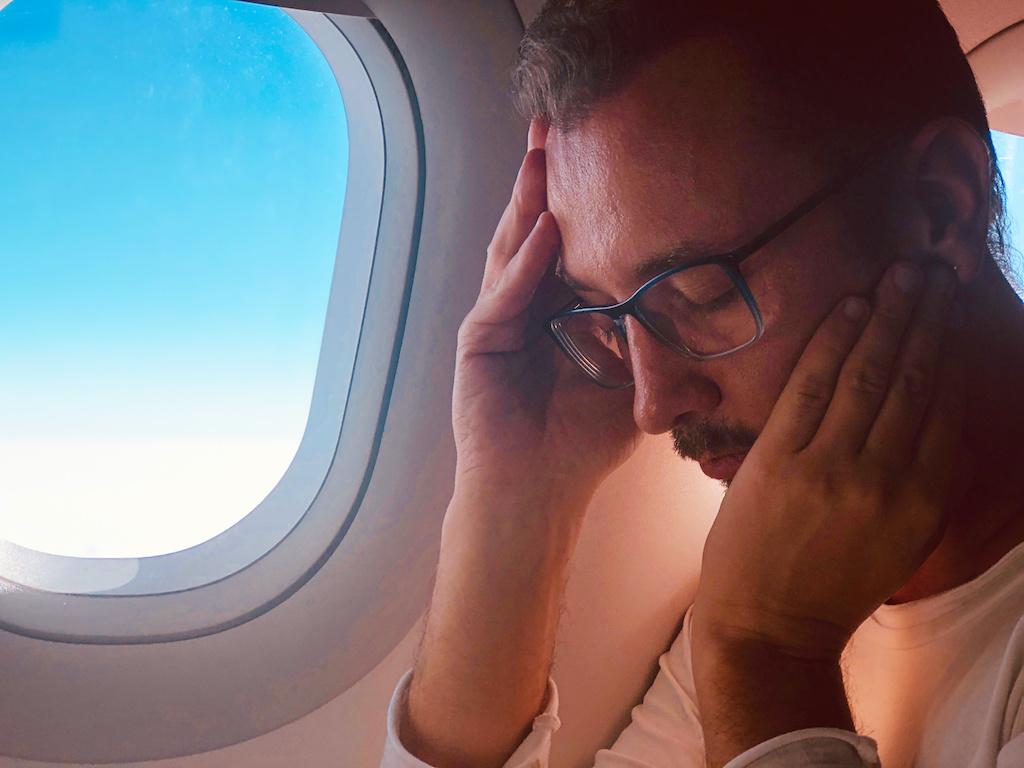
I once flew a regular schedule of Las Vegas night flights. Passengers would assemble around 11 p.m. and my airline would disperse them to cities around the country in time for them to stumble groggily to their homes and offices. Most of them disembarked tired but uncomplaining, but there were always a few who should not have flown. “Unwell” would be the most polite term I could use to describe them. They had probably been making merry right up to departure time, and some were newly impoverished as a consequence of too many trips to the blackjack table. During boarding you could sometimes pick out the ones who might be a problem.
We owe a duty to our passengers to treat them well, as if they were our own family. We also need to exercise careful judgment about their welfare when they are not doing such a good job for themselves.
Most companies have detailed passenger handling procedures and you should follow them. My thoughts are more general. Here are five things I found necessary on the night flights that I think apply to all passenger flights:
- Be alert to passenger symptoms during boarding. Your passengers may seem relaxed and unremarkable, but take a closer look. A frown, bloodshot eyes, an uneven gait or disheveled dress can be a tipoff to a potential problem. An argument between husband and wife can escalate later, and hostility toward ground-handling people portends further problems for you. People may try to conceal taking drugs and alcohol, so look for bad breath, drunken behavior or drug symptoms. More than once, I have denied boarding to people who were obviously inebriated. Some people will tell you frankly they are feeling poorly or just recovering from illness or surgery. Ask them if they feel fit to travel. Especially during pandemic times, you have to ask the hard questions and act on the answers.
- Do not allow impaired people to fly. People are poor judges of their own wellbeing. If they are sick, injured or impaired, being on an airplane will not make things better and could make them much worse. If they are traveling to obtain medical treatment, you should know about it in advance and be notified of any special handling requirements. I can recall many examples of impaired people we as a crew should have caught. On a flight from Acapulco to Houston, a passenger told us during cruise he had a broken arm and a concussion and asked to be met on arrival by an ambulance. He’d been in a car wreck on the way to the airport and didn’t want local medical assistance. We should not have missed his symptoms during boarding. On another occasion, we had a young woman who could not be awakened, probably from a drug overdose, after we landed in Portland. It was 4 a.m. and there was no-one at the airport to meet her. I wish we had noticed her condition before we departed. On another occasion, a passenger complained of intestinal pain during pushback, then declared himself okay. He groaned and suffered during the entire flight. We should have left him at the gate.
- During flight, listen carefully to your flight attendant but get help early. Flight attendants are trained to care for passengers. Their assessment of a passenger is usually valid and we should follow their advice whenever possible. However, a call to MedAire or your company’s medical service advisor should begin sooner rather than later. If there’s a physician or emergency medical technician on board, solicit their help. If you have no flight attendant, don’t spend too much time guessing at the passenger’s problem. Get on the ground.
- Weigh the risks of a diversion against the needs of the passenger. If a passenger is obviously in distress, landing promptly is necessary. However, knowing where to land can be tough. If you can’t get into a major city airport, medical facilities near a smaller airport may not be readily available. Furthermore, diverting to a strange airport has its own risks. I once had to consider a diversion when crossing Colorado and Kansas in the winter, late at night. There had been a snowstorm and visibility was limited at the available airports and runways were snow-covered. We needed a terminal with a jet way because of the height of our passenger doors. The passenger with complaints had good vital signs and got a positive report from the med tech aboard and from MedAire. We continued to destination. When we arrived, the passenger declined any assistance and walked off the airplane normally.
- Write a thorough post-flight report. Your company will need to know the details of any passenger problem in the event any complaints arise about your flight. You will not remember much about what happened after a few weeks, so write the story down promptly. In addition, people sometimes do file lawsuits over things you never thought they would. One common plaintiff’s tactic is to wait several years before filing the suit in hopes you can’t remember what happened. Having the facts down on paper is your best defense. Remember, there are 1,352,027 lawyers in the United States and only 268,000 ATP and commercial pilots. The lawyers have us outnumbered.
People with sniffles, aches and pains fly all the time. Most of the time they have no problem. We as flight crews are not qualified to assess their true health or treat their ailments any more than a doctor is qualified to fly a Cat II ILS. We have to use common sense, good crew communication and ground-based medical services to keep a sick person off an airplane or get him or her back to earth safely. We are also responsible for considering all the risks to the flight, not just the welfare of one person. We have to take care of the immediate problem, but we also have to avoid creating a bigger problem.
